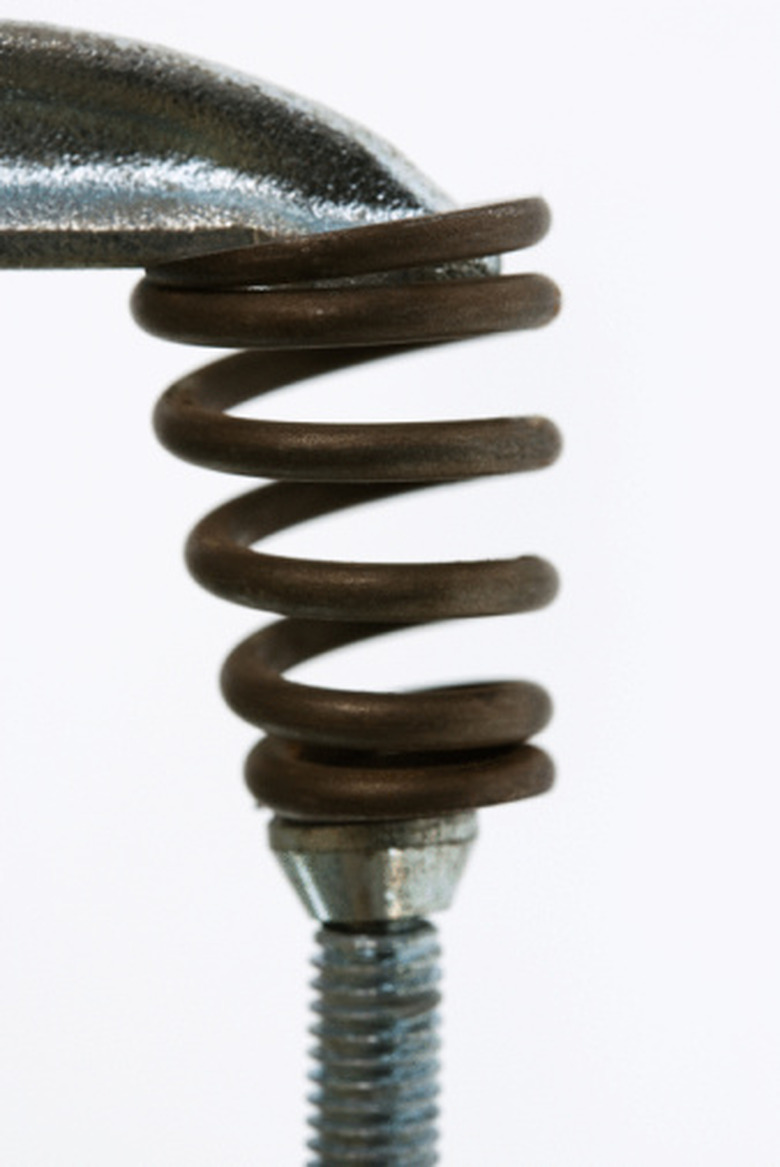How To Calculate Compressive Strength
Compressive strength is an effective way of measuring how much load a surface or material can bear. The test for this sort of strength is performed by exerting force downward on top of the object, paired with an equal and opposite force exerted upward on the bottom. In other words, you squash it – and then use a simple mathematical formula to determine the compressive load it took before the material failed.
TL;DR (Too Long; Didn't Read)
The compressive stress formula is:
CS = F ÷ A, where **CS** is the compressive strength, **F** is the force or load at point of failure and **A** is the initial cross-sectional surface area.
Considerations for Testing Compressive Load
Considerations for Testing Compressive Load
A compressive strength test requires precise measurements, so the "squashing" process of a compressive stress test must be done under carefully controlled conditions, including the equal-and-opposing forces applied to compress the material from both top and bottom.
Because of this, and because the test is performed to the point of failure or permanent deformation, you wouldn't test an actual structure in situ; instead, you'd test a cubic or cylindrical specimen. The cube or cylinder shape ensures that you'll have flat, parallel surfaces at the top and bottom of your specimen, and both faces should be cross-sectional – that is, taken at right angles to the vertical axis of the specimen.
Data Points in the Compressive Stress Formula
Data Points in the Compressive Stress Formula
Once you have your specimen set up in the appropriate apparatus for your scientific "squashing" process, you'll need to take note of two data points. The first is the cross-sectional area of the specimen you're crossing or, to put it another way, the surface area of just one of its faces.
The other data point you'll have to measure is the force applied to your specimen at the moment it fails. You'll apply the force slowly until failure, which is usually defined as a permanent deformation. In other words, a deformation that won't return to its original shape once the compressive force is removed. Often, the "permanent deformation" takes place when the object breaks.
TL;DR (Too Long; Didn't Read)
If you use U.S. customary units, measure the force in pounds and the area in square inches so that your result is in the standard unit psi or pounds per square inch.
Calculating Compressive Strength
Calculating Compressive Strength
Once you have these data points – whether you've measured them yourself in the lab or received them in a word problem – you can calculate the compressive strength of your object. The formula is:
CS = F ÷ A, where CS is the compressive strength, F is the force or load at point of failure and A is the initial cross-sectional surface area.
**Example:** You've been asked to calculate the compressive strength of a concrete cylinder. The cross-sectional faces of the cylinder each measure 6 inches across, and the cylinder failed at 71,000 pounds of force. What is the compressive strength of that sample of concrete?
You can go ahead and substitute the force measurement, 71,000 pounds, into your equation for F. But don't be hasty and plug 6 inches in for the cross-sectional surface area, A. You've been given the diameter of the face of the cylinder, but what you need is the surface area of that face.
To calculate the surface area, remember that the area of a circle is πr2, where r is the circle's radius, which is equal to 1/2 the circle's diameter. So with a diameter of 6 inches, your circle's radius is 3 inches, and its area is π(3)2 = 28.26 in2.
Now that you have that information, your equation reads as follows:
CS = 71,000 pounds ÷ 28.26 in2 = 2,512 psi
So the compressive strength of your sample is 2,512 psi. Incidentally, this meshes with the standard 2,500 psi compressive strength of concrete for residential applications; concrete for commercial structures can have a compressive strength of 4,000 psi or more.
Cite This Article
MLA
Maloney, Lisa. "How To Calculate Compressive Strength" sciencing.com, https://www.sciencing.com/how-8086903-calculate-compressive-strength/. 26 November 2018.
APA
Maloney, Lisa. (2018, November 26). How To Calculate Compressive Strength. sciencing.com. Retrieved from https://www.sciencing.com/how-8086903-calculate-compressive-strength/
Chicago
Maloney, Lisa. How To Calculate Compressive Strength last modified August 30, 2022. https://www.sciencing.com/how-8086903-calculate-compressive-strength/
